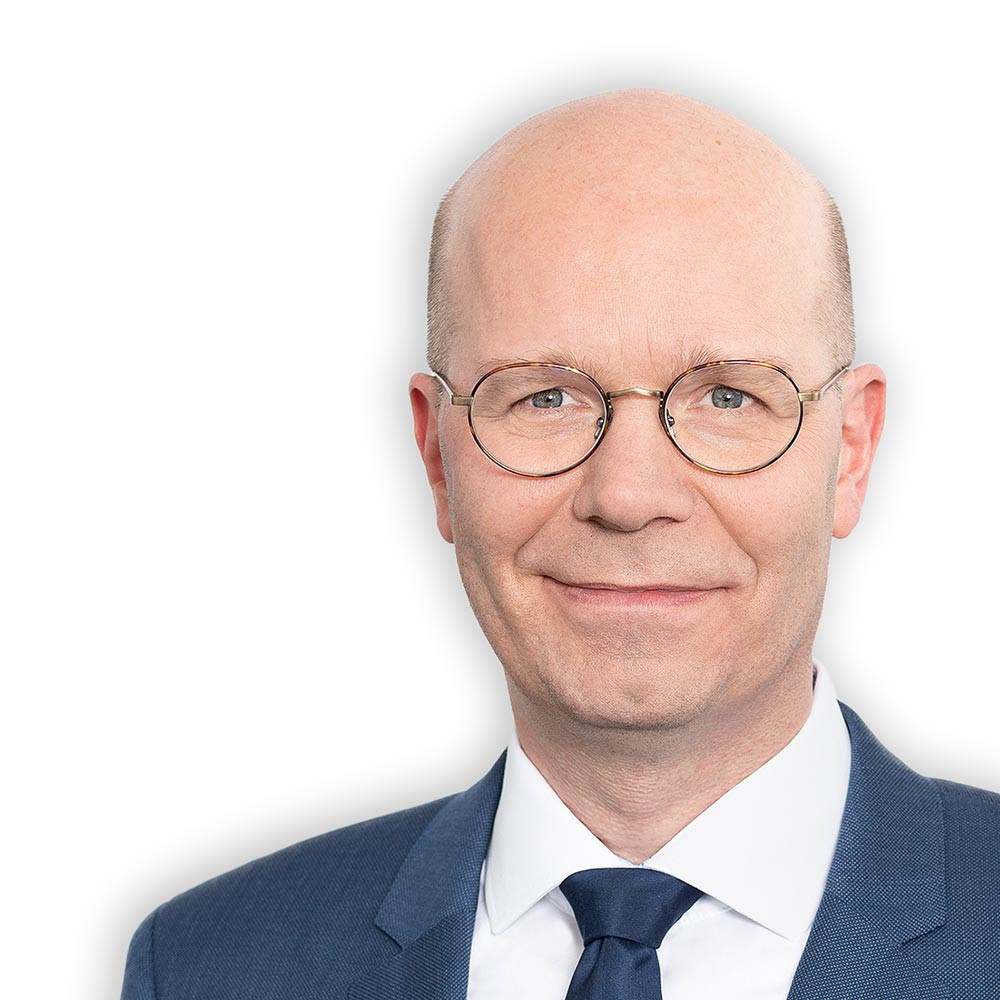The Great Resignation or The Big Quit – behind these terms hides one of the greatest waves of resignations that the USA has ever experienced. hkp/// group experts Frank Gierschmann and David Voggeser explain what exactly this is all about, how this relates to the German-speaking market and what solutions companies could use to respond and prevent this from happening.
Mr. Gierschmann, Mr. Voggeser, why is the retention of employees who are critical to success currently being so widely discussed?
Frank Gierschmann: Companies across the world are currently experiencing a wave of voluntary resignations to an unprecedented degree and the scale of this wave can be mostly clearly seen in the USA. Here, according to the U.S. Bureau of Labor Statistics, 4.5 million people quit their jobs last November alone - many of them without a new job in sight.
David Voggeser: Especially affected are jobs in those sectors heavily impacted by Covid-19, such as in health care or leisure and hospitality. When we look at hierarchical levels and age groups the most dramatic increase in resignations can be seen mainly at mid-career levels and among people aged 30 to 45. This means that those leaving are employees at their most productive age, who potentially had very good promotion prospects with their employers.
But what are the reasons behind voluntary resignations on this scale?
Frank Gierschmann: The causes are varied. Essentially, they can be divided into two categories: firstly dissatisfaction with their framework employment conditions, and secondly with the content of their work. Framework conditions include flexible working hours and locations. Many employees no longer want to dispense with the privileges opened up to them within the context of the Covid-19 pandemic. Content of work primarily includes the meaningfulness of one's own work, but also factors such as a lack of appreciation by supervisors or the actions of employers with regard to environmental, social and governance issues, or ESG for short.
Is social protection of such a broad selection of the workforce really this important?
David Voggeser: It is certainly crucial that public financial aid was able to effectively cushion the individual impact of the pandemic in many cases. But we see this aid as an element that strengthens another highly central aspect: the high employment or low unemployment rate. In a labor market, security in one's current job tends to become secondary.
Which aspects are becoming more important, in that case?
Frank Gierschmann: These are the aspects of the working environment and content already touched on. The meaningfulness of the work also comes to the fore, as does the employer’s behavior. Companies with a clear talent strategy, which demonstrate development opportunities and exclude discrimination in all respects, become more appealing when viewed in comparison with those with deficits in this respect - or who perhaps simply do not communicate it effectively enough.
David Voggeser: We repeatedly point out the importance of clear, proactive communication of corresponding processes and key figures in our studies on human capital management for good reason.
But this is mostly about listed companies…
David Voggeser: No! It’s about all companies. A non-listed employer with appealing human capital management communication will be able to position itself more easily as a role model and by extension, as an appealing employer in the current labor market than a listed company that only follows the minimum ESG standards of its investors and publishes poorly as well.
Back to the actual wave of resignations: will we see a scale similar to that of the USA in Europe and in the German-speaking market?
Frank Gierschmann: Certainly, parallels can be drawn from the experiences in the USA and the European labor market. In Germany, too, it’s those at mid-career levels and between the ages of 35 and 44 who feel most impacted by the COVID-19 pandemic and who have lost the most in terms of their motivation to work. But while we’re not experiencing things on the same scale as in the US, it can’t yet be ruled out.
What are the biggest risks for companies arising from a fluctuation wave of this kind?
David Voggeser: It doesn't take much imagination. Mass resignations will be expensive for companies in many respects. When many employees leave at the same time or in quick succession, this naturally has a direct impact on productivity and the corresponding turnover and profit figures. In many cases, knowledge and experience are lost to a degree that can no longer be compensated for. At the same time, the costs for substitutions and new appointments are on the rise. These easily make up half an annual salary on average per vacant role.
Frank Gierschmann: Resignations and frequently having to train new employees also reduce the commitment of remaining employees, morale in the company as a whole and also damage the employer brand. This in turn lowers the appeal for new talent, which is currently being fought over like never before.
You recommend targeted retention management. What does this entail?
David Voggeser: Retention management means identifying weak points and problems in the company in terms of employee dissatisfaction throughout the employee journey and at the same time, using targeted countermeasures to improve the human, professional and cultural cement in the company. The methods to counteract unwanted fluctuation are as varied as the causes are company-specific. There is no easy answer!
Frank Gierschmann: Even employers who have previously been highly appealing must be aware that they could be confronted with a serious problem. Not infrequently, it is a creeping, self-reinforcing process that leads to a high turnover rate. To avoid things going down the pan, companies should regularly check a number of indicators. Questions can help here, such as: How many and specifically, which roles are there that can only be filled with difficulty, or not at all? Are projects being delayed or even canceled due to a lack of employees? Are success-critical performers leaving the company time and again, or is their commitment and satisfaction declining?
David Voggeser: The focus should not only lie on long-standing performers. Increased resignations during the probationary period may also be an important indicator of retention problems.
Why not simply raise wages?
David Voggeser: Because the world has become more complex than that! Adequate earnings are always a prerequisite for attracting, retaining and motivating employees. Short-term or one-off monetary benefits such as bonus payments, shares or even allowing use of company cars cannot plug the gap here. The latter measures usually only bring about temporary improvements.
Frank Gierschmann: In the current complex situation, the most important developments are those that can be subsumed under the keyword of ‘purpose’, meaning the meaningfulness of one's own activities in a larger economic and/or social context, along with ESG conformity. Employers who act in an exemplary manner in terms of environmental, societal and social framework conditions and also communicate this exemplary role actively and professionally hold higher appeal for talented employees.
David Voggeser: The opportunity to help shape the framework conditions of one's own work also proves a major asset in improving retention rates, for example by establishing flexible working time models, promoting or providing kindergarten spaces or options for working from home. In any case, the correct method of addressing a target group is decisive for whether the incentives offered result in higher employee loyalty or whether their use remains ineffective.
What procedure would you recommend within the framework of targeted retention management?
Frank Gierschmann: Once the issues and causes have been identified, tailor-made solutions can be developed. The focus here lies on creating positive employee experiences throughout the employee’s lifecycle in the company. The targeted measures must be specific to the target group, e.g. addressing the individual needs of new starters, part-time workers, employees caring for children or parents, managers, etc.
David Voggeser: Taking into account different life circumstances and requirements is a decisive factor when it comes to sustainable, successful retention management - and at the same time, also guarantees high employee engagement, which in turn pays off when it comes to individual performance and the overall performance of the company.
If there is no uniform approach to retention management, what exactly does the hkp/// group's Retention Toolbox offer?
David Voggeser: The Retention Toolbox is made up of tried-and-test methodology and checklists. With the combined use of quantitative and qualitative methods, the hkp/// group toolbox helps, as an initial step, to accurately identify affected target groups and to get to the root causes of fluctuation. This step in particular is highly important, because often symptoms are worked on rather than the supposed cause.
Frank Gierschmann: In addition, our Retention Management Toolbox contains the tools required to deal with localized errors or starting points efficiently and effectively. The structured explanations and tools set out in layman’s terms mean that no specialized professional is required. During implementation, a project manager and (depending on the size of the task) a small HR team can be beneficial.
How long will an average company need to see success on this basis?
David Voggeser: We don’t have a magic wand to wave and provide the magic solution to all the retention problems. The toolbox is more of a handbook aiming to address topics that have not yet been recognized or sufficiently taken into account when designing a goal-oriented employee experience.
Frank Gierschmann: It is also clear that it is not enough to simply bring out the toolbox once, use it and then let it disappear again among the mothballs. Quite the opposite: the aim is to inspire a continuous thought and design process and create a broad, deep-rooted awareness within the company for permanent consideration of how to retain employees who are critical to success.
Thank you for taking part in this interview.




